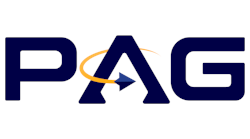Advanced Ultrasonic Testing Solutions Can Improve Aircraft Inspections
May 2, 2018
Related To:
SNOQUALMIE, Wash. (May 2, 2018)—On Friday, April 20, the U.S. Federal Aviation Administration issued an emergency airworthiness directive that requires operators of certain CFM56-7B engines to perform a one-time ultrasonic inspection of all 24 fan blade dovetail concave and convex sides. This directive was prompted after a Southwest Airlines Boeing 737-700 powered by CFM56-7B engines experienced an engine failure due to a fractured fan blade.
The FAA directive provides no specific language about ultrasonic testing. As a global leader in nondestructive testing (NDT) solutions, Zetec Inc. believes it is important to acknowledge that “ultrasonic testing” or UT encompasses several different technologies that can detect flaws in CFM56-7B fan blades and other components.
The FAA directive provides no specific language about ultrasonic testing. As a global leader in nondestructive testing (NDT) solutions, Zetec Inc. believes it is important to acknowledge that “ultrasonic testing” or UT encompasses several different technologies that can detect flaws in CFM56-7B fan blades and other components.
Aircraft owners, operators, and inspection service providers should choose the most appropriate technology given their need to increase uptime, improve safety, and comply with the FAA directive.
Ultrasonic Testing in Aircraft Applications
Ultrasonic testing uses pulses of high-frequency sound energy to detect surface and subsurface cracks and other defects. These pulses come from a transducer or probe, which a technician manually moves over the surface of the component under inspection. The probe emits ultrasonic waves into the material at precise intervals and a set angle; when a sound wave encounters a defect, some of that energy is reflected back like an echo.
There are two UT methods used in aircraft inspections today:
Conventional or standard UT: In simple terms, a conventional or standard UT probe is capable of generating and receiving a single ultrasonic sound wave. The focal point and angle of the beam are fixed, which can make it more difficult to locate and visualize flaws especially in components with complex geometries like engine fan blades. The use of a custom-shaped probe can help ensure the accuracy of such inspections.
Phased-array UT: Phased-array UT is an advanced inspection method that uses multiple individual elements (typically from 16 to 64) in a single probe. By exciting each element in a controlled manner, a phased-array UT instrument can produce a precise beam shape and generate two and three-dimensional views of a flaw with greater speed and accuracy. This is a significant advantage for the inspection of complex geometries and can improve probability of detection (POD) and better characterize potential indications.
Webinar on Flaw Detection in Aircraft and Aerospace Applications
To provide more information about the latest NDT inspection solutions for aircraft applications, Zetec will host a one-hour webinar titled “Improve Flaw Detection in Aerospace with Advanced Technologies.” The webinar will be available in two sessions: Wednesday, May 23, from 10 a.m. to 11 a.m. PDT; and Thursday, May 24, from 7 a.m. to 8 a.m. PDT.
A recorded version will be available for later viewing. To register, visit: http://www.zetec.com/news/webinar-improve-flaw-detection-aerospace-advanced-eddy-current-array-technology/
The webinar will cover advanced eddy current array solutions that can produce faster, more detailed surface inspections of hard-to-reach aircraft components, as well as phased-array UT technologies.
About Zetec
Zetec is a global leader in nondestructive testing (NDT) solutions for the critical inspection needs of industries the world counts on every day, including power generation, oil and gas, aerospace, railway, maritime, automotive, military, heavy industry, and manufacturing. We serve as a single source for high-performance solutions in both eddy current and ultrasonic technologies. For 50 years, we have advanced NDT standards and science, providing new insight and control through inspection solutions that protect our customers’ most important assets and ensure the quality of their products. By integrating design and engineering with our own manufacturing, Zetec delivers solutions that optimize productivity, safety, and total cost of ownership.
Zetec is a subsidiary of Roper Technologies Inc., with global engineering and manufacturing centers in Quebec City and at our corporate headquarters in Snoqualmie, Washington. Zetec support spans the globe, with Centers of Excellence in Houston, Paris, Seoul, Shanghai, and Tokyo. For more information about Zetec, visit zetec.com, follow Zetec on LinkedIn, Facebook, and @ZetecNDT on Twitter.



